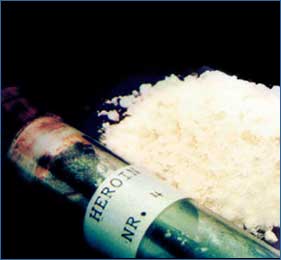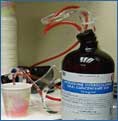T To make smoking heroin or “Heroin No. 3,” the heroin base is mixed with hydrochloric acid and additives such as caffeine. The paste is stirred until it dries; often in lumps that must be crushed before packaged for sale. Gray or brown, “Heroin No. 3” is also known as “brown sugar” thanks to its resemblance to unrefined sugar. Only 20 to 30 percent pure, “Heroin No. 3” is unsuitable for injection. Heroin of purer quality is called “Heroin No. 4” and is made by adding ether and hydrochloric acid to heroin base. A white powder heroin is the result. The heroin is filtered and dried and compressed into bricks with a heroin press. Heroin of this quality has a purity of 80 to 90 percent.
Sources: US Department of Justice, “Opium: A History” by Martin Booth, National Institutes of Health, Office of National Drug Control Policy
Heroin Facts
Methadone, discovered by German scientists during World War II, has been used for more than 30 years to treat opiate addiction. Methadone is a synthetic painkiller that mimics the effects of heroin and is usually taken orally in the form of pills and liquid syrup. To reduce heroin withdrawal symptoms such as diarrhea, tremors, and goose bumps methadone is taken once a day under a doctor’s supervision. Unlike the quick rush of heroin, its effects are more gradually felt and can — and last up to 36 hours. Twenty percent of the estimated 810,000 heroin addicts in the U.S. receive methadone. Methadone treatment continues to be controversial since patients can develop an addiction to the methadone itself.
- Previous: Step 4: Morhpine to Heroin Bas...




